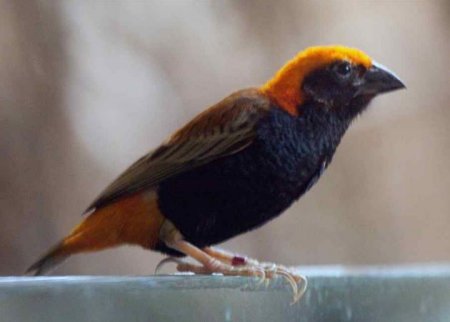P
ProfRem
Guest
The Federal Government on Monday in Abuja warned farmers against locusts and quelea birds coming into the country from Niger Republic, calling for vigilance and urgent action.
The Minister of Agriculture and Rural Development, Chief Audu Ogbeh gave the warning during an emergency meeting with Commissioners for Agriculture from 24 states.
Ogbeh expressed fear that the current hunger in the country would further be exacerbated if the alert from Niger was not taken seriously and measure put in place their entry.
He also warned that if the Quelea birds and locusts as well as grasshoppers are allowed into Nigeria, they would do terrible damage to farmer’s crops.
Here are few things NigerianBulletin can say about the bird...
- Quelea is a genus of small passerine birds that belongs to the weaver family Ploceidae, confined to Africa.
- These are small-sized, sparrow- or finch-like gregarious birds, with bills adapted to eating seeds. Queleas may be nomadic over vast ranges; the red-billed queleais said to be the most numerous bird species in the world.
- When unable to find grass seeds or when opportunities arise, quelea will attack crops. It is a major pest throughout much of sub-Saharan Africa and can cause significant economical losses.

- it is the most numerous bird species in the world, with peak post-breeding population estimated at 1,500,000,000. The red-billed quelea is mainly granivorous, except when feeding its chicks insects or when eating insects prior to migration or breeding, and it relies on a supply of grass seeds to survive.
- Quelea have been recorded eating the following crops: barley (Hordeum vulgare), buckwheat (Phagopyrum esculentum), bulrush or pearl millet (Pennisetum glaucum), finger millet (Eleusine coracana), foxtail or italian millet (= manna Setaria italica), common or proso millet (Panicum miliaceum), oats (Avena), rice (Oryza sativa), sorghum (Sorghum bicolor and S. caffrorum), teff (Eragrostis tef), triticale (Triticum x Setale) and wheat (Triticum durum)
- Quelea do not attack maize on the plant as their bills are too small to cope with the large seeds, but they will eat crushed maize at feedlots.
- It is the World's most dangerous bird species
The Minister of Agriculture and Rural Development, Chief Audu Ogbeh gave the warning during an emergency meeting with Commissioners for Agriculture from 24 states.
Ogbeh expressed fear that the current hunger in the country would further be exacerbated if the alert from Niger was not taken seriously and measure put in place their entry.
He also warned that if the Quelea birds and locusts as well as grasshoppers are allowed into Nigeria, they would do terrible damage to farmer’s crops.
Here are few things NigerianBulletin can say about the bird...
- Quelea is a genus of small passerine birds that belongs to the weaver family Ploceidae, confined to Africa.
- These are small-sized, sparrow- or finch-like gregarious birds, with bills adapted to eating seeds. Queleas may be nomadic over vast ranges; the red-billed queleais said to be the most numerous bird species in the world.
- When unable to find grass seeds or when opportunities arise, quelea will attack crops. It is a major pest throughout much of sub-Saharan Africa and can cause significant economical losses.

- it is the most numerous bird species in the world, with peak post-breeding population estimated at 1,500,000,000. The red-billed quelea is mainly granivorous, except when feeding its chicks insects or when eating insects prior to migration or breeding, and it relies on a supply of grass seeds to survive.
- Quelea have been recorded eating the following crops: barley (Hordeum vulgare), buckwheat (Phagopyrum esculentum), bulrush or pearl millet (Pennisetum glaucum), finger millet (Eleusine coracana), foxtail or italian millet (= manna Setaria italica), common or proso millet (Panicum miliaceum), oats (Avena), rice (Oryza sativa), sorghum (Sorghum bicolor and S. caffrorum), teff (Eragrostis tef), triticale (Triticum x Setale) and wheat (Triticum durum)
- Quelea do not attack maize on the plant as their bills are too small to cope with the large seeds, but they will eat crushed maize at feedlots.
- It is the World's most dangerous bird species

